Contents
click here to Download the Most Important 13 Books in Cement Industry
click here to Download the Most Important 13 Books in Cement Industry
What are the actions require stopping the kiln shell corrosion phenomenon?
By: Nael Shabana qatar.cement@yahoo.com
It is really difficult to stop the shell corrosion phenomenon as it is difficult to control all the factors influencing the shell corrosion. Surly; there are a number of preventive actions which may help us to minimize the tendency and rate of shell corrosion. These actions could be summarized in 8 points:
1-It seems to be more successful to apply different type of gas-tight coatings or paints on the inner kiln shell to lessen the chloride attack. The inner kiln shell should be coated with the available anti corrosive paint (figure-35) immediately after de-lining. This will also help in preventing the absorption of atmospheric moisture by hygroscopic compounds such as KCl.
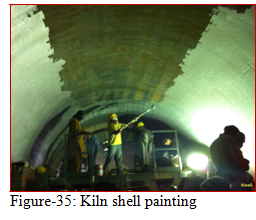
2-Silicon Carbide compounds are an effective solution for corrosion resistance. At operating temperature, decomposition and oxidation form specific glass phases blocking the porosity and forming new phases with the alkalis without disruptive growth.
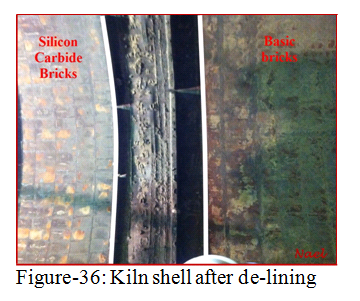
3.As kiln shell temperature is of major importance to the speed of shell corrosion (figure-37), the shell temperature from outside should not exceed 300°C. Additional cooling fans should be provided for effective external cooling. In addition, the selection of bricks in this area should be reviewed with respect to their thermal conductivity and wear rate pattern. If there is no coating on bricks in that area, high wear rate leads to reduced residual lining thickness leading to higher shell temperature. Therefore, Refractory bricks with relatively lower thermal conductivity and high wear resistance should be preferred in the corrosion affected area.
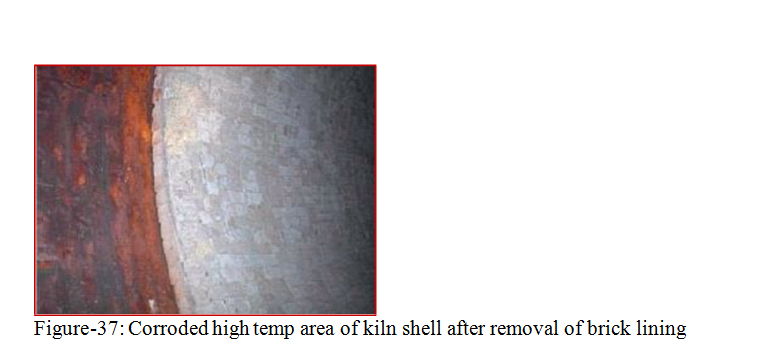
4-Application of spreader jack should be done in each ring at the time of closing the individual rings and due care should be taken so that bricks do not crush or develop internal cracks due to pressure applied by spreader jack. By using Spreader jack we can fix the brick ring with very less gaps in between refractories. So chances of alkali attack through gap in between brick will be very less. The ring should be closed using key bricks instead of cutting and fixing with the help of hammer.
5-Basic reason of corrosion is alkalis so to remove these alkalis we can use alkali by-pass system (figure-38).
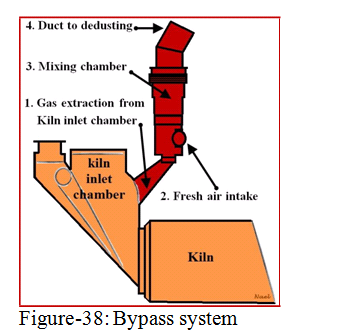
6-Although basic refractories are costlier than neutral refractories, high quality basic refractory is highly recommended as they provide more service time and more resistance to corrosion and alkali attack.
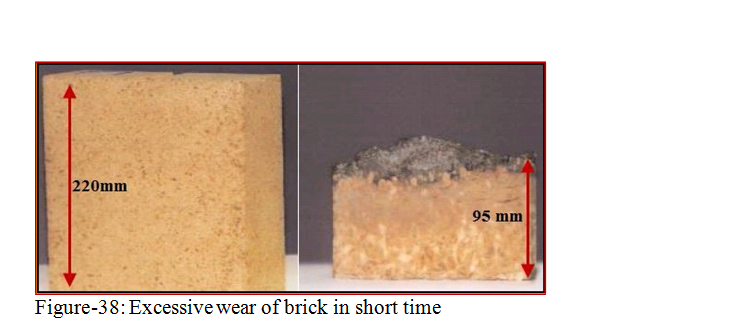
7- As the intrusions of volatiles take place not only through the bricks but also through joints and gaps created during the campaign. It is recommended that a thorough study of lining quality, attention should be given to two characteristics, namely permeability and reversal thermal expansion of bricks. While permeability plays a role in allowing gases/liquids to reach up to kiln shell, the reversal thermal expansion gives an idea of extent of shrinkage a particular brick undergo when the kiln temperature is reduced from its normal operating temperature to any lower temperature.
8-The shell corrosion is attributed to a large extent to poor oxidizing conditions prevailing in the kiln. The best measure against chloride promoted sulphidization is to keep a steady and sufficient supply of fresh air to the surface of the kiln shell. The oxygen at kiln inlet should be maintained at 1.5 % minimum to ensure proper oxidizing conditions with CO not exceeding 0.1% at this point.